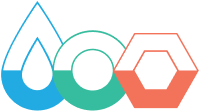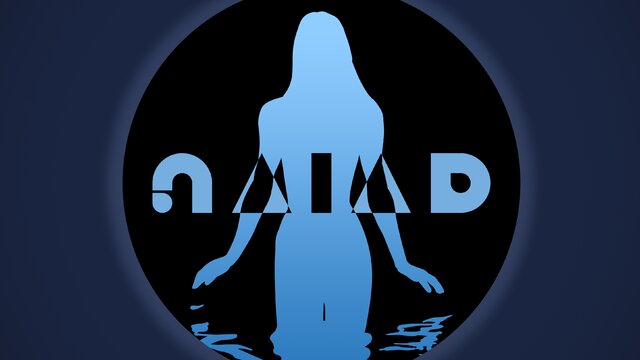Approx. 70% of potable water resources are used for farming around the world on average, while in Europe, this index is at 40%. Storing, saving and sustainable management of water is a challenge that can be confronted solely thanks to the cooperation of science, business and the society. Naiad Water Investments accepted this task and is working on it. The company focuses on agriculture and searches for new solutions that reduce the use of water in the sector.
We are talking to the Naiad Water Investments team – Piotr Wróblewski and Ewelina Pietrzak – about their projects, investments in water, cooperation with scientists and their presence at a prestigious event, American Water Summit Re-Thinking Water, which was held in Los Angeles.
3W: Where does the idea for an application that reduces water consumption in agriculture come from?
NWI: The idea for the Naiad Irrigation application came into being a few years ago, when alarming information about climate changes and water crisis that we all face started to make it way to the mainstream media discourse. Conclusions from reports prepared by experts from international organisations become more worrying by the year. Independently from the place of residence, performed work or affluence, international water crisis awaits us all and it will adversely affect a number of aspects in our lives. In this context, we started to think about sectors where water is the basis of operation and how its consumption can be limited.
3W: Why did you choose agriculture?
Statistics were helpful in this respect – there is clear data that the greatest beneficiary of potable water in the world is agriculture. It uses 70% of all water resources. So, we focused on this sector as the main area for searching for new solutions, to reduce consumption and sometimes even unnecessary waste of water. The dynamic development of IT technology, automation and robotisation of other sectors and implementation of such solutions in agriculture in highly developed countries that is observed have induced us to analyse how the most recent technological accomplishments can be harnessed to serve our idea. Based on the already existing solutions for farmers, who today can use the agricultural technology known as 4.0 agriculture – with mobile applications to manage a farm in selected areas – we concluded that only a real tool to manage water processes on farmland will positively affect the amount of water consumed in agriculture. This is how Naiad Irrigation that is implemented today was born.
3W: One must admit that your flagship project, Naiad Irrigation, is a greatly interesting application – it makes use of blockchain technology, algorithms analysing the necessary data compiled in the field and artificial intelligence. How have you managed to connect them to water?
NWI: The application compiles all the necessary information in a secure blockchain environment. The artificial intelligence processes it and in this way optimises water consumption at a specific farmland. All of this happens in real time and accounts for the current readings from the sensors located on a specific area. This allows for optimum consumption of water for correct growth of cultivated plants. The core of the Naiad Irrigation application will be maximised saving of water used to irrigate crops in specific conditions. This will be possible thanks to the algorithms relying on scientific studies, artificial intelligence, environmental and meteorological data and presence of sensors that monitor multiple aspects of the environment in farmlands. Combination of several factors and a thorough analysis of the compiled data are meant to guarantee optimum growth of crops and high yield in relation to irrigation.
3W: How is optimum use of water handled nowadays in agriculture?
NWI: Optimisation of water in agriculture is a well-known subject matter around the world, especially in areas that are already struggling with difficulties in accessing this resource. Technological development and IT progress have a massive impact on the efficient use of individual resources, including water, in the production of crops. In areas with a clear deficit of water, artificial irrigation with the use of modern irrigation system is of crucial significance. Agriculture pays attention to the modern methods of water retention and sustainable management of water resources held. A way to optimise water for agricultural purposes is its re-use from treated municipal sewage, which is gaining an ever growing group of proponents, for example in the EU. Today, the basis for water optimisation in agriculture is efficient irrigation of farmland, where planned and purposeful delivery of water to plants plays the main role, in order to guarantee the best conditions for growth at a minimum use of water.
3W: Where do you check the efficiency of your solution? Do you have any test fields?
NWI: We are in the middle of analyses and field tests with respect to the efficiency of Naiad Irrigation. For the purpose of this stage of development of our application, we initiated cooperation with research centres and selected universities in Poland, which are going to make their test fields available to us. Observations and results to-date have been very optimistic and show us savings in irrigation plans of selected cultivated plants as compared to the traditional irrigation methods.
3W: Cooperation with scientists during tests is gaining popularity and you have also chosen this path. How can both sides benefit from it?
NWI: Today, cooperation between university centres and business representatives determines progress and is a key to success, both commercial and scientific. It is a win-win type relationship and more and more entities decide to start collaborating because practice shows that both parties gain measurable benefits from it. As part of this cooperation, research and development projects can be pursued which today may be called a catalyst for innovation implementation. This is our approach to cooperation with universities. We are convinced that our relations with researchers and scientists will offer long-term and fruitful cooperation which will positively affect the activities of farmers around the world.
3W: Let us go back to investing in water. What does it consist of? What is the ‘blue market’?
NWI: The blue market is considered one of the most prospective markets in the next decades. It refers to the broadly-understood market of water, along with economy sectors that are related to it. First of all, investments in water are associated with companies that produce and sell bottled water. However, this is just a fraction of what the Blue Market has to offer today. Companies related to water are entities that deliver components for water treatment and the ones that handle the servicing of water supply infrastructure, sewage treatment and water purification. Nowadays, water is as important as such resources as petroleum, gold, silver or grain.
3W: In this context, how can people’s lives look like in the perspective of several dozen years?
NWI: It is hard to predict how our life is going to look like in several dozen years, because this depends on a number of factors that are connected to one another, yet the forecasts of scientists and experts are clear: if our approach to water management does not change, a huge water crisis awaits us, which may diametrically change the layout of political and economic power in the world. Not only the poorest countries of Africa and Asia, which automatically evoke the slogans of ‘drought’ and ‘ shortage of water’, are going to experience water shortages – it has recently transpired that this problem is also affecting the US and affluent EU countries. It is time to face the truth: our future depends on joint efforts and actions for the sake of equal access to potable water.
3W: You have just returned from the American Water Summit in the US. The leitmotif of the conference was the necessity of changing our mode of thinking about water.
NWI: Yes, the conference – which is one of the largest industry events in the US – was held between 24 and 26 January in Los Angeles. Its main axis of interest was the discussion on the re-use of water in the face of adverse climate changes, troublesome droughts and updates of existing legal provisions in the water law regulations. The participants unanimously highlighted the necessity of a change in the approach to the issues of water in the US – it is a derivative of very difficult conditions for the American farmers, who in the recent years have been struggling with great droughts. This conference should be treated as a summit of most important entities of the public and private sector from the water market.
3W: What other projects are you working on? Would you like to share some news with the readers of the 3W newsletter?
NWI: At the present moment, our team focuses on development of the Naiad Irrigation application, which we are planning to present to farmers in a test version this year. In turn, our business plans are definitely broader, prospective and have a global range. The application for irrigation is an introduction for the preparation of a comprehensive product for farmers, irrespective of their location. We are planning to design a mobile application that is going to support and replace farmers in their daily work at a farm. The available functionalities include budget management or a schedule of individual agro-technical operations. We would like to approach the challenges and daily activities performed at a model farm in a comprehensive way; they can be streamlined and automated to make them maximally simple and friendly for the farmers in any place of the world.
3W: Thank you very much for this interview and good luck with your projects!








